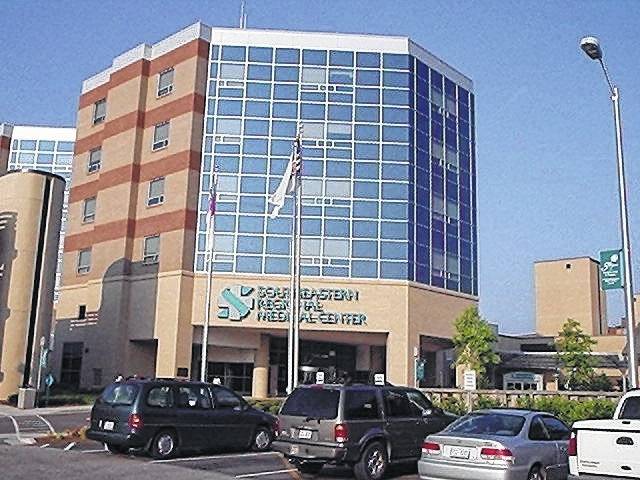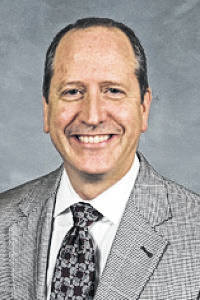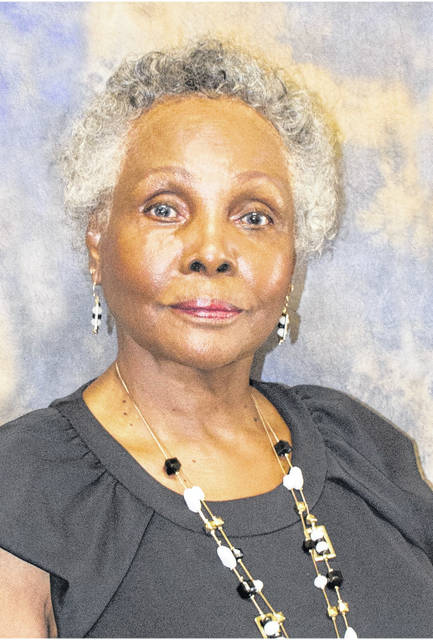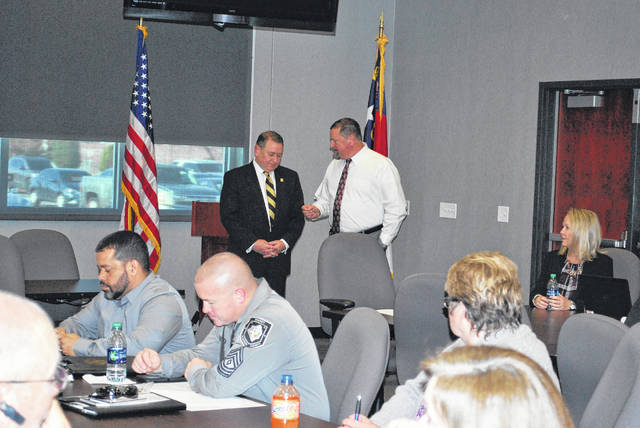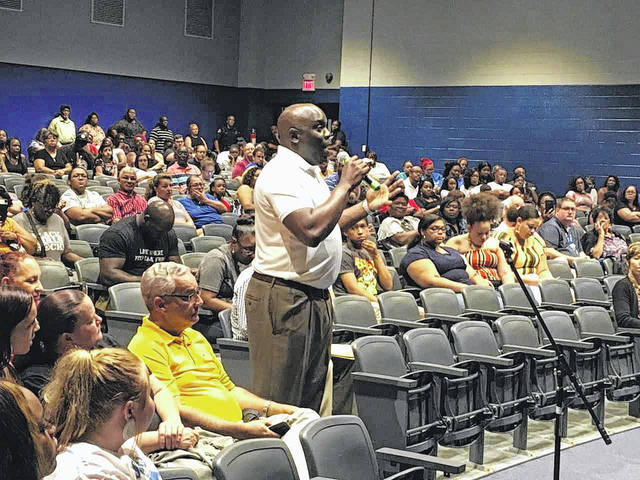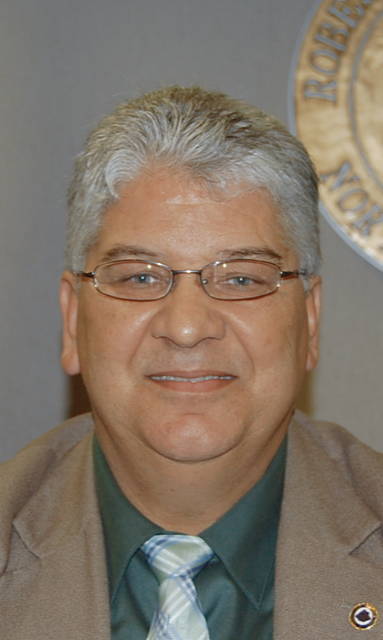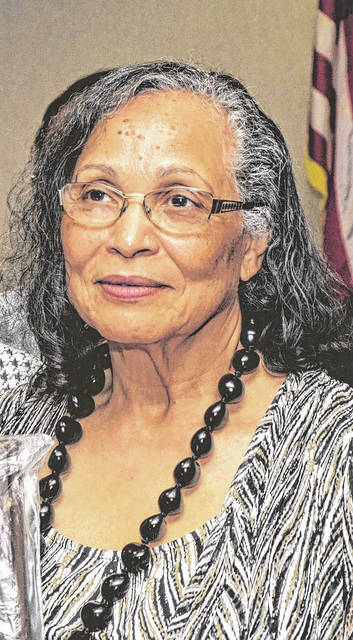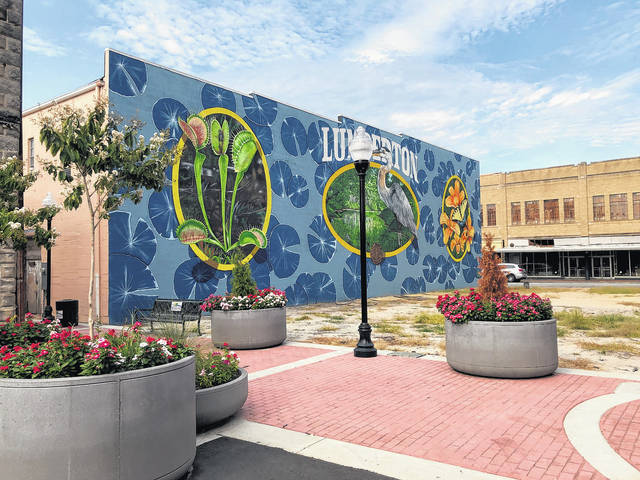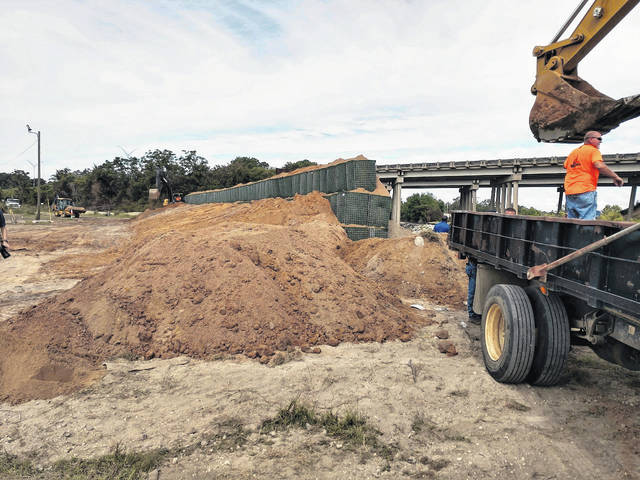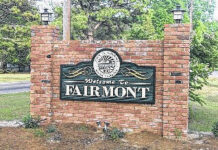Each year at the end of the year, the editorial staff at The Robesonian puts on its thinking cap to come up with the top 10 newsmakers of the year that is ending to share with our readers. We know not everyone will agree, but we look for a mixture of good and bad, and for stories that had the most profound effects on the most people. They are presented roughly in chronological order, although specific dates cannot always be assigned, and there is no attempt to rank them by Nos. 1 through 10 — editor.
In an announcement that no one necessarily saw coming, Southeastern Health officials said on March 13 that they were looking for a partner so the nonprofit could remain viable while facing the challenges of a changing and competititve industry, especially in rural areas.
In making the announcement with the use of The Robesonian, Kenneth Rust, the chairman of Southeastern Health’s board of trustees, emphasized that SeHealth is healthy and will enter the search from a “position of strength.”
“It’s no secret that health care has and will continue to experience dynamic, unprecedented change,” Rust said in a statement. “At the same time, we serve a unique population with growing health-care needs. Since our inception 65 years ago, Southeastern Health has grown to best serve the needs of this community, and we believe now is the time to explore growth again to ensure we’re best positioned to care for our neighbors for the next 65 years and beyond.”
Rust said that any partner would have to meet four criteria: be a cultural and mission fit; understand rural health care; understand the population’s health; and provide access to capital.
Southeastern Health, with 2,600 employees, is one of the largest private employers in Robeson County. It is a nonprofit that is licensed for 452 beds and includes Southeastern Regional Medical Center, which offers a combination of acute care, intensive care and psychiatric services to more than 15,000 inpatients and 61,000 emergency patients annually. It had at the time of the announcment 146 employed physicians and advanced practice providers, and 230 contract physicians and advanced practice providers.
Southeastern Health’s history dates back to the merger in 1946 of Thompson Hospital and the Baker Sanatorium to form Baker-Thompson Memorial Hospital.
In 1953, a 140-bed hospital was constructed and was called Robeson County Memorial Hospital. In 1960, in order to better reflect its growth, it became known as Southeastern General Hospital, and on Jan. 1, 1994, the name changed again, this time to Southeastern Regional Medical Center.
It became Southeastern Health on Jan. 1, 2013, to underscore that its services extended far beyond the medical center.
As the year ends, nothing more has been said publicly about Southeastern Health’s efforts to find a partner.
— — —
Although The Robesonian presents its Top 10 stories each year chronologically, and not by signficance, clearly the biggest news of the year was the June 18 decision by the Board of Education for the Public Schools of Robeson County to shutter four small schools and turn a high school into a middle school.
The board’s decision to accept a plan offered by Superintendent Shanita Wooten as a way to address a $2 million shortfall came after consultations with state education officials, and also after the board had already said no to the same plan.
The consolidation, the first for the Public Schools of Robeson County, which was formed by merger of five systems in the laste 1980s, includes the closing of Janie C. Hargrave Elementary in Lumberton, R.B. Dean Elementary in Maxton, Rowland Middle School and Green Grove Elementary, as well turning South Robeson High into a intermediary school.
The board, in making the decision, first heard some public outcry, which was loudest from the Rowland community, whose members likened the closing of the high school to cutting the heart out of their community. South Robeson students were transferred to Lumberton, Fairmont and Purnell Swett high schools.
While pitching the plan, Wooten argued that savings primarily associated with a reduction in staff would put the system on stronger financial footing, and she said the target level for staff could be achieved through natural attrition. That happened, and as the new year begins, school officials say the system is out of the red.
School officials also pointed to other advantages of consolidation, including having a certified teacher in every classroom and no longer relying so heavily on substitute teachers, as well as expanded opportunities in academics and athletics for students who had been attending South Robeson.
— — —
On Sept. 10, Robeson County voters were key in deciding that Rep. Dan Bishop, a Republican from Charlotte, would represent District 9 in the U.S. House, ending a 10-month saga that began with the November 2018 general election whose results the state ultimately decided could not be trusted.
Two months after Bishop won election, he filed for re-election to keep his seat, and began to campaign for the March 3 primary.
The results of the general election, which showed Republican Mark Harris with a small win over Democrat Dan McCready, were overturned because of findings of fraud primarily in Bladen County, which led to criminal charges. Although there were other elections that some believed were also tainted, including a close race for District Court judge in Robeson County, the state only ordered that the District 9 race be done again.
Harris, citing health issues, did not file for re-election, and Bishop won a crowded Republican primary to earn the right to face McCready, who did not face a primary challenger.
Bishop won the tight race, receiving just under 51 percent of the total votes cast. Robeson County was seen as crucial to Bishop’s win, slightly favoring McCready, but by nowhere near the same margin as it went for McCready in the 2018 general election. State Sen. Danny Britt campaigned heavily for Bishop, and political pundits believed that could have been the key to sending a Republican and fellow senator to Washington, D.C.
— — —
Loistine DeFreece, a member of the Board of Education for the Public Schools of Robeson County since 2004, resigned that position unexpectedly on Oct. 8 during a school board meeting, doing so immediately after she was accused of representing District 1 while living outside of the district.
The accusation came from Gerome Chavis, the face of the We the People Movement, prompting DeFreece to speak briefly and then announce she would quit the board.
DeFreece had been flooded out of her home in South Lumberton by Hurricane Matthew in 2016 and had never returned on a permanent basis, instead living in a North Lumberton home. The school board’s policy says that a district representative must live on a permanent basis in the district that person represents.
DeFreece, whose term was to expire in 2020, immediately announced her plans to run as an at-large candidate in the March 2020 primary, and subsequently filed for that position.
The school board deadlocked on appointing a replacement for her seat on the board, so District 1 will remain empty until July 2020.
But the story doesn’t end there: Douglas McBroom, a frequent critic of the school board, has accused it of acting illegally by allowing DeFreece to vote during the time she live out of district. As the year ends, Superintendent Shanita Wooten said a review is underway on all the votes that were taken since May that ended 6-5, meaning DeFreece’s could have been decisive. It is unclear what will happen after that.
May was picked because that is the month DeFreece sold her South Lumberton home.
— — —
On Nov. 21, it was announced by the U.S. attorney for the Eastern District of North Carolina that the Robeson County Sheriff’s Office could once again participate in the federal drug asset forfeiture program, putting an end to a 15-year expulsion.
Bobby Higdon, in making the annoucement, called it a “second chance” for the Sheriff’s Office, which had been expelled from the program following Operation Tarnished Badge, which led to the convictions of 22 Sheriff’s Office employees, including the former sheriff.
Sheriff Burnis Wilkins, during his 2018 campaign for sheriff, campaigned on his ability to get the department included in the program again. He and District Attorney Matt Scott worked together to make it a reality.
“Agencies don’t often get a second chance at this program,” Higdon said. “With new leadership in place in Robeson County, we thought it could be done.
“The goal is to restore faith in Robeson County law enforcement. This is one of those steps.”
The program allows the Sheriff’s Office to share in assets seized during major drug busts such as money and vehicles, but it also allows for the department to collaborate with federal law enforcement on such investigations.
“The timing was right with a new district attorney and a new sheriff,” Scott said. “I’ve been begging and pleading for this for a while.”
Said Wilkins: “We will make this work.”
— — —
The long wait on the Atlantic Coast Pipeline will just get longer, and as the year ends, there remains doubt about whether or not it will ever be built, although its owners remain confident.
Builders had planned to have the pipeline completed and in service by the middle of 2020. But a string of courtroom challenges filed this year by pipeline opponents have the builders looking at late 2021 as the completion time.
The legal fight has made it to the U.S. Supreme Court, where the justices will be asked by the pipeline’s builders to overturn a ruling by the Fourth Circuit Court of Appeals in Richmond, Virginia. The court ruled on Dec. 13, 2018, that the U.S. Forest Service lacks the power to grant rights-of-way to cross beneath the Appalachian Trail. Plans call for a 0.1-mile segment of the pipeline to cross more than 600 feet beneath the Appalachian Trail.
The Supreme Court agreed in October to hear the pipeline builders’ appeal. Oral arguments are scheduled for Feb. 24, with a final ruling expected by June.
The $6 billion pipeline, which is to begin in West Virginia and end somewhere near Pembroke, would deliver natural gas to the states through which it runs, and proponents say would help local efforts to recruit new industry who want the clean energy.
Opponents, however, cite environmental concerns, say it would be unsafe, and further argue that is is not needed.
— — —
For years, the Robeson County Board of Commissioners, for better or worse depending on your political stripe, was effectively run by Raymond Cummings, its longest serving member, having been elected in 1996. But during 2019, the power on the board shifted away from Cummings and those who followed in his path, and as the year ends, the board is gauranteed more change during 2020.
Cummings, who battled health issues during 2019, has not filed for re-election, and neither has Jerry Stephens, who served as chairman of the board for much of 2019.
The shift in power on the board during 2019 was apparent in Cummings’ failed attempt to get his wife, Betsy, hired as tax administrator. That didn’t work at least in part because Pauline Campbell, the wife of Berlester Campbell, a commissioner before his unexpected death in 2018, stood against it.
Campbell and Faline Locklear Dial became the second and third women to serve on the Board of Commissioners.
— — —
The Robeson County Board of Commissioners was prepared to get an earful when it began the task of adopting an ordinance that would more effectively deal with dangerous dogs.
The need became apparent after a savage attack in December 2018 when an elderly woman was killed and two young children were severely injured when mauled by Rottweilers at a home in Marietta.
The commissioners established a board consisting of experts, including law enforcement, veterinarians and Health Departtment officials, who worked with County Attorney Gary Locklear on drafting an ordinance. One of the key elements was establishing a yearly fee for the ownership of cats and dogs that is intended to create a revenue stream that will be used to hire additional Animal Control officers. The $10 privilege fee takes effect July 1.
The ordinance was taken before the public during a hearing in early October and to everyone’s surprise, including the commissioners, only one person spoke — the son of the woman who was killed in the Marietta attack. He said he was in favor of tougher laws.
The ordinance, in addition to establishing a fee, outlines what defines a dangerous dog and how they would be dealt with should an attack occur.
Despite the public’s indifference at the public hearing, The Robesonian has included the ordinance as a top 10 story because there are as many as 30,000 dogs in Robeson County, meaning a large majority of homes will be affected.
— — —
Lumberton had its hands full with flood issues in 2019, but not to the point where flooding distracted the city from its continued focus on downtown development.
The city produced a slate of entertainment at the new downtown plaza amphitheatre in 2019. It already is a gathering site for events, including Rumba on the Lumberton and Veterans Day celebrations.
Mayor Bruce Davis and the City Council gave their wholehearted support to a 9,000-square-foot, $1.5 million expansion of the Carolina Civic Center and Theater. Not only will there be a lobby large enough to host its capacity crowds, but event space will be added that will turn the historic property into a true civic center capable of hosting a variety of events, large and small.
Phase one of the Riverwalk was completed along the Lumber River. The second phase will cross the West Fifth Street bridge and terminate behind the old water treatment plant.
The downtown area also got its first major mural in 2019. On wall space donated by Dick Taylor, renowned muralist Scott Burkin created larger-than-life scenes of the Lumber River.
Finally, the city took one of the forgotten pieces of downtown — an alley — to create a walkway and sitting space connecting the Carolina Civic Center and Theater with the plaza.
With a new fitness center, wine bar and the old Southern National Bank building ready for occupancy by the county in January, things are looking up for the downtown.
— — —
Flood mitigation efforts are running wide open in Lumberton and Robeson County as city and county leaders try to build more resilient communities.
The Lumber River is being cleared of trees that are obstructing its flow. While this project is ongoing along the county’s major waterway, canals, ditches, bridges and culverts are being cleared and reinforced.
Two drainage districts carry water from Lumberton, Meadow Branch in the north and Jacob Swamp in the south and west, and both experienced major flooding and property damage after hurricanes Matthew and Florence.
An earthen wall was thrown up at the CSX Rail Road tracks early this fall as Hurricane Dorian approached, and an engineering study has begun to close the gap in the Jacob Swamp Dike during future floods. It is a costly project that may protect South and West Lumberton in the future.
Homes in South, West and North Lumberton are being bought and demolished. Homes in Highland Park and businesses along Roberts Avenue got soaked twice, and the city has cleaned major canals.
A more sweeping solution to flooding along Meadow Branch is awaiting approval. The city would divert water from the Tanglewood area to the river rather than sending it in a circular route along Roberts Avenue, under Interstate 95 at the former Ramada Inn, through Mayfair Subdivision, across N.C. 211 and then to the river.
While other municipalities work to solve issues in their flood-prone areas, smaller canals and ditches in the county badly need attention. If funding is found for every project, Lumberton and Robeson County will have no guarantees, but the future of more resilient communities is at hand.
